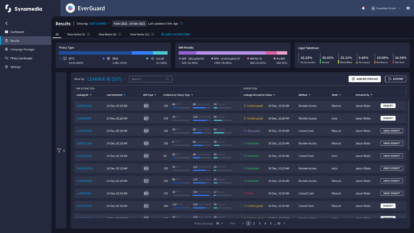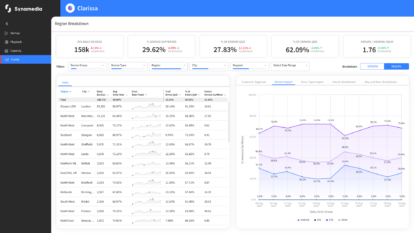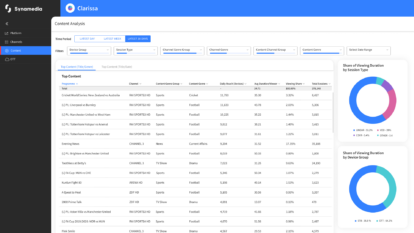The Battle Against Sports Piracy
In the evolving sports media landscape, one component remains consistent: sports piracy is the single biggest threat to the industry. In fact, it has been estimated that sports piracy could cost as much as $28.3 billion a year – a significant figure given the entire sports media rights market was valued at $55 billion as of 2022.
And as the largest threat, it’s far from a victimless crime. It is costing jobs, investments and much more, and is unfortunately on the rise. Despite accelerating anti-piracy technology, the problem is continuing to grow as it’s getting easier for pirates to steal, aggregate, deliver and sell content illegally for billions of dollars.
Meanwhile, the opposite is true for legal operators. It’s getting increasingly difficult and more expensive to protect, create and buy content. To top it off, aggregation is nearly impossible, and the price of consuming media is increasing.
In this article we will explore the sports piracy landscape, exploring how the fight against sports piracy is far from fair, and provide insights into potential measures to prevent piracy.
What is sports piracy?
The term ‘sports piracy’ encompasses a range of activities that have implications for copyright infringement.
Examples of sports piracy include:
- Illegal streaming websites that live stream sports events without proper licensing or authorisation.
- IPTV services that offer subscription-based access to sports events and channels, again without the proper licensing or authorisation.
- Broadcasting sports events in public places without having the commercial licences to do so.
Technological advances, shifts in viewing behaviour, and the cost of legal streaming services have all contributed to the rise in sports piracy.
Is it illegal to watch sports streams?
It is not inherently illegal to watch sports streams. However, it is illegal to watch sports streams from an unofficial or unauthorised source that does not have the copyright owner’s permission.
In the UK, as part of a crackdown on online piracy, police conducted visits to 1,000 households that were identified as accessing illegal sports streams. Additionally, five men were jailed after it was found that they were offering an illegal football streaming subscription service. These measures demonstrate the ongoing commitment shown towards combating sports piracy.
Piracy and illegal sports streaming
Illegal streaming is a major threat to the sports piracy landscape. In our report, Charting Global Piracy, 84% of those surveyed admitted to streaming sports illegally. This means that the majority have streamed sporting events without having the proper copyright permissions. Almost a third of the most engaged pirate consumers pay for a pirate service to enable them to do this.
This report found that almost half of those surveyed subscribe to a legitimate sports OTT service. Therefore, debunking the misconception that pirate consumers are not valuable to the sports media value chain.
How to prevent sports piracy
To combat these issues and take on sports piracy, operators need to take a holistic approach, starting with protecting their own services.
Here are three things which operators can do to prevent sports piracy:
Forensic watermarking
Once the content has been stolen, the process of locating and removing illegal content from pirate sites by way of notice and takedown begins. However, notice and takedown has limited impact as most online service providers (OSP) aren’t compliant and even if they are, the content is rarely taken down in time.
To increase the effectiveness of the notice and takedown approach, watermarking OTT services can help identify stolen content. By locating stolen content, the source of the leak can be identified and shut down in real time without relying on an OSP.
When implementing watermarks, some companies make the mistake of using a client watermark. This type of watermark is embedded into the video on the client side, usually by image overlay or blending. Client watermarks may seem like an effective way to prevent piracy, however, they can easily be compromised.
Instead, companies should use a headend watermark as it leaves no gap for pirates to exploit.Headend watermarking is also very effective in shutting down pirate infrastructure as it can identify them and shut them down in an instance.
Legal action
When all else fails, legal action can prevail in preventing sports piracy.
Synamedia has a very active and successful operational security team that infiltrates and exposes pirates around the globe. Our team understands pirate technologies, pirate hacking methodologies, and employs the latest technologies to protect customers’ infrastructure and devices.
Our team covertly interacted with, and subsequently infiltrated, a very influential group of pirates. They were able to ascertain that this group was solely responsible for sourcing and delivering legitimate premium content to over 95% of the illegal IPTV infrastructure within the United Kingdom. Working with our client, we provided the Serious Organised Crime Agency of the UK police with the evidence for arrest. The individual within the UK was arrested and the IPTV services lost their illicit content.
In Brazil, Synamedia assisted in the take down of 334 pirate sites and removal of 94 apps from the Play Store during the 11 raids in nine Brazilian states.
Additionally, in the weeks leading up to the 2022 FIFA World Cup, our team also tracked down and identified the leading soccer pirate operator in Latin America. This resulted in our client and the Motion Picture Association seizing the pirate’s technical infrastructure and roughly 50 websites, and ultimately denying service to its 48 million unique users per month.
Such effective action makes it incredibly difficult for the pirate to recover.
Credential abuse
More than 20% of sports fans share passwords with people who are outside their household. While this is not a piracy issue, service providers such as Netflix, are introducing systems to identify credential sharing and attempt to convert the freeloader into a paying customer.
To prevent credential abuse, Synamedia’s CSFEye, a credential sharing and fraud insights tool, can identify all types of sharing. Identifying the bad types of credential sharing allows organisations to take targeted actions to restrict the accounts of password sharers and convert freeloaders, all while keeping customers happy.
How to prevent illegal sports streaming
Our report Tacking Sports Piracy in an IP World found that 75% of people who stream sports illegally know that what they are doing is wrong, suggesting that education will do little to tackle the problem of illegal sports streaming.
Instead, there is clear evidence that ‘deterrents’ are a powerful weapon in combating this issue. In fact, for 65% of those surveyed, the top four issues that would dissuade them from using pay and free pirate services were:
- The service being taken down
- Poor video quality
- Lags in the streaming service
- Signal dropping
The only issue that ranked higher than service quality was a fear of being arrested which was shared by 66% of those surveyed.
Combat sports piracy with Synamedia
Our research shows that 91% of people – across seven global markets – who have access to five or more legal video subscription services have also watched illegal content. Without action, the problem will not go away.
To combat sports piracy, content and rights owners must focus on their end-to-end capability, including both technical prowess and cyber intelligence, to minimise impact and shutdown bad actors. And we can help!
To find out how Synamedia can protect your content and service, contact us.
About the Author
Simon Brydon has worked as a senior executive in the sports industry for 20 years both as a broadcaster and managing and selling media rights, most recently at Pitch International LLP.
From 2008 to 2014, Simon ran the media and digital business of Racing UK where he was responsible for managing and distributing the media rights for the UK’s top 34 racecourses.
In 2003 he created Cycling Television, the live OTT sports TV channel broadcasting the best professional cycling globally. With over 220 days of racing, Cycling TV was a pioneering business and became a world leader in this emerging sector. In 2007 Simon sold the business to a Canadian media company.












